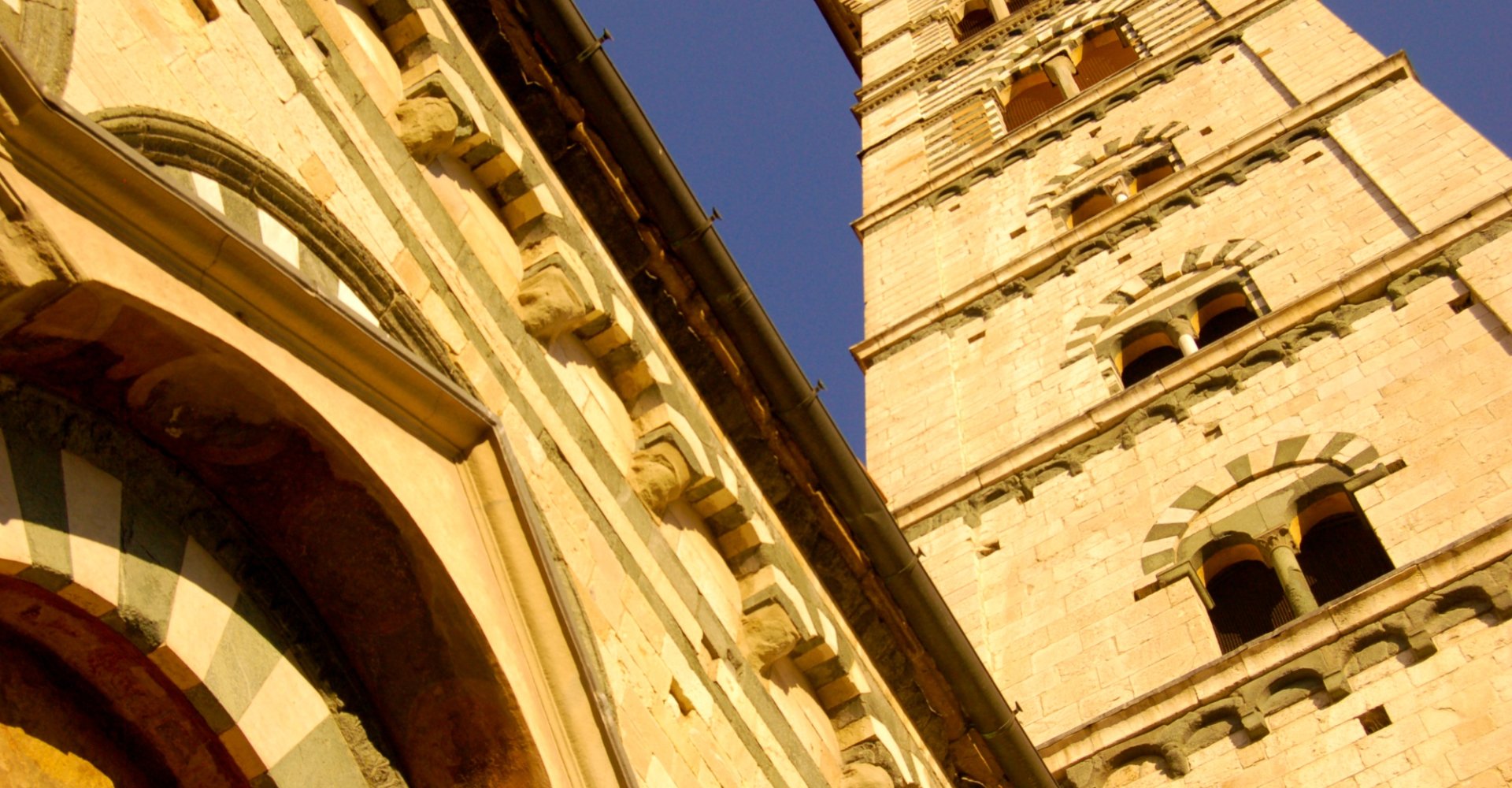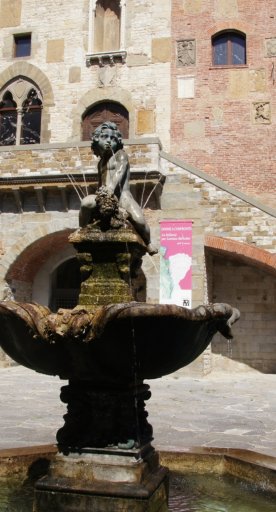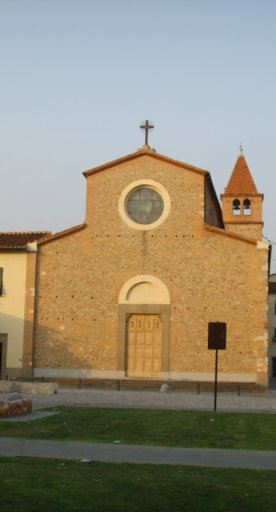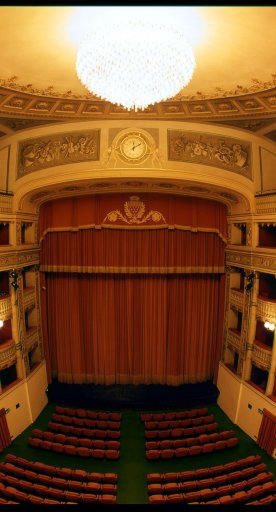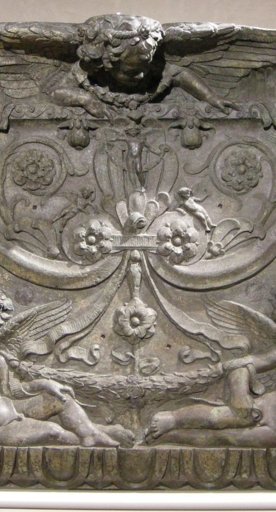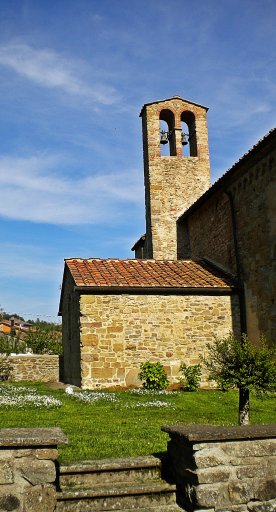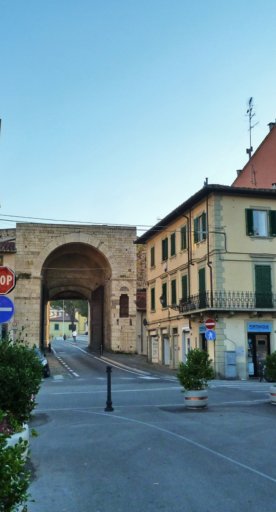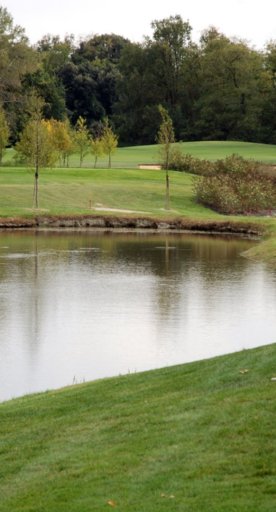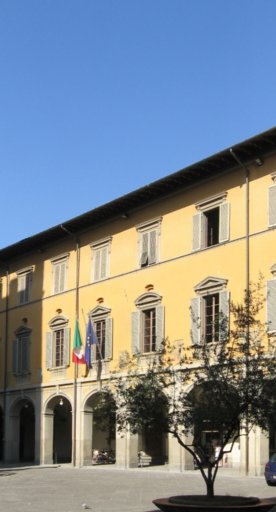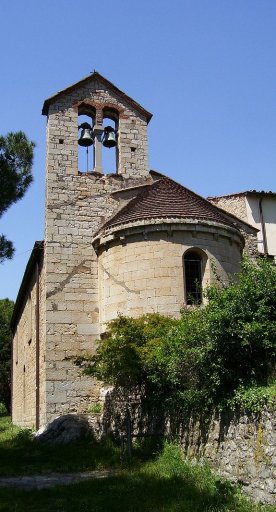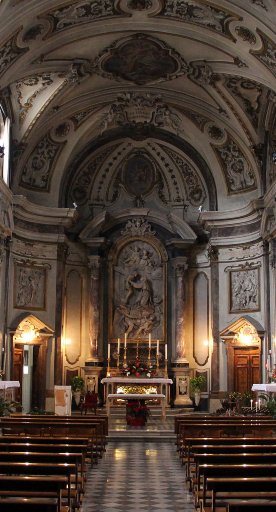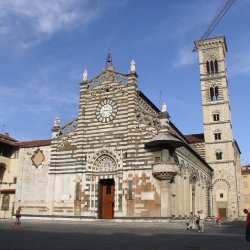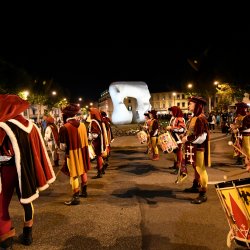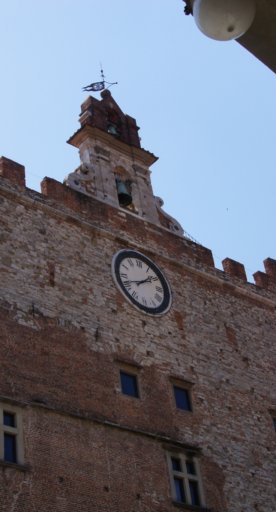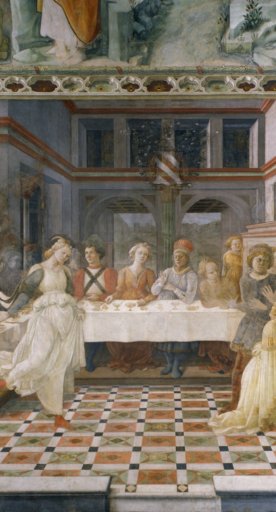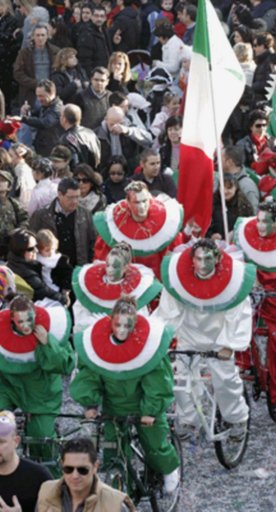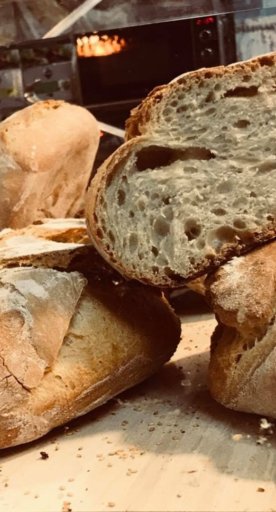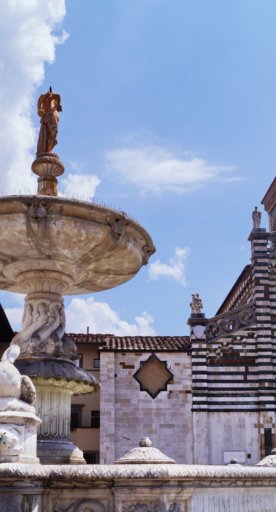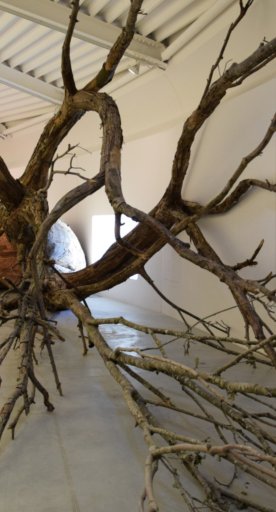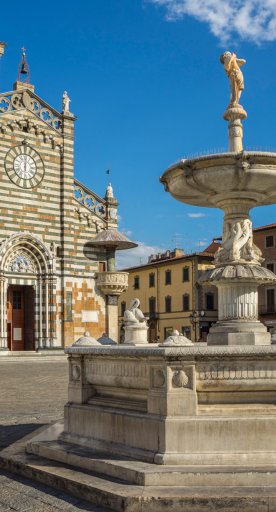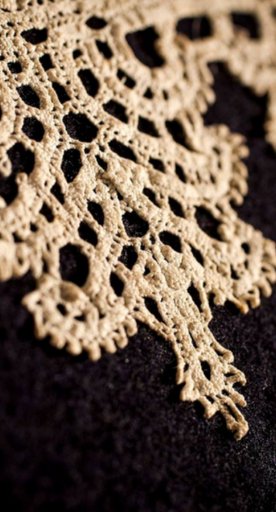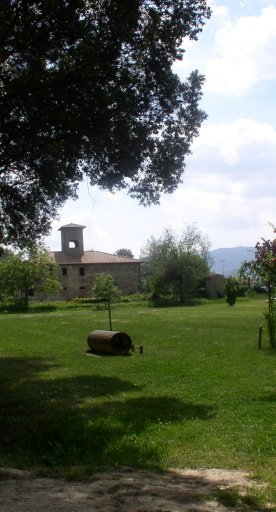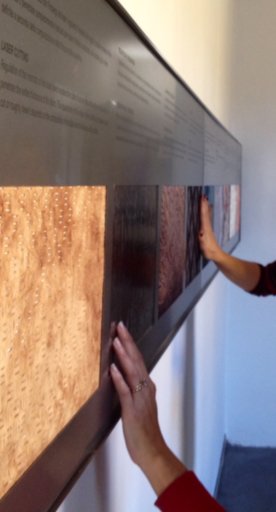Prato
Explore culture from the middle ages through to contemporary art in one city
Prato is a city that never ceases to amaze and is perfect for those in search of less touristy destinations.
The city combines the ancient charm of its historic centre with the modern business and contemporary art district, in an itinerary that ranges from the Middle Ages to Avant-garde.
Tradition and innovation unite to form a strong combination that has, in recent years, made Prato a modern multicultural metropolis. Like every evolving city, knowledge also passes through that of its communities: here the Chinese community holds particularly deep roots in the city.
It’s also a textile city that has consistently inspired fabric collections, paving the way for the fashion and choices of major brands with the its excellence in production.
What to see in Prato
Prato’s historic centre is elegant and well preserved, and is at the very least equal in beauty to the medieval centres of many other Tuscan cities.
One of the first things that will attract your attention within the city walls is the Emperor's Castle, which is the last remaining trace of Suevian architecture in central-northern Italy.
Let your gaze peruse the stunning Piazza Duomo, which houses the Santo Stefano Cathedral, and is only a short distance away. On the right hand side of the exterior façade is the extraordinary pulpit by Donatello and Michelozzo, while inside you’ll have free range to admire the splendid frescoes by Filippo Lippi.
The pulpit is still used 5 times a year, most notably on September 8th while displaying the Holy Girdle of the Madonna, a relic to which Prato is particularly attached.
While wandering around the centre it’s definitely worth visiting Palazzo Datini, the Palazzo Pretorio, the Basilica of Santa Maria delle Carceri by Giuliano da Sangallo, and the Churches of San Francesco, San Domenico, Sant'Agostino and Santo Spirito.
Finish your stroll in the centre with a visit to the Museo dell'Opera del Duomo, where works by renowned artists such as Filippo Lippi, Donatello, Michelozzo and many others are displayed.
Stopping at the Fountain of Young Bacchus, the symbol of the city, is well worth your time. The original is kept inside the Town Hall’s courtyard, whilst the one you can see in Piazza del Comune is a twentieth century copy.
Piazza Mercatale is also in the heart of the city and is one of the largest medieval squares in Europe; late nineteenth century and early twentieth century buildings overlook the square.
Prato has successfully combined history and contemporary culture; indeed, the "Luigi Pecci" Centre for Contemporary Art - designed by the rationalist architect Italo Gamberini and founded in 1988 - has been completely renovated by the Chinese-Dutch architect Maurice Nio, now taking a futuristic form.
The centre holds a heavy international presence, with a wide variety of exhibitions in addition to the central permanent collection, which includes major contemporary artists of the last 30 years.
We recommend finishing your trip in the centre with the Textile Museum, a unique and didactic expression of the city's textile history. The Museum holds samples ranging from the fifth century to the present day, while the building that houses it is a monument of industrial archaeology, being the sole large nineteenth-century production complex that remains within the medieval walls.
Prato’s historic centre is elegant and well preserved, and is at the very least equal in beauty to the medieval centres of many other Tuscan cities.
One of the first things that will attract your attention within the city walls is the Emperor's Castle, which is the last remaining trace of Suevian architecture in central-northern Italy.
Let your gaze peruse the stunning Piazza Duomo, which houses the Santo Stefano Cathedral, and is only a short distance away. On the right hand side of the exterior façade is the extraordinary pulpit by Donatello and Michelozzo, while inside you’ll have free range to admire the splendid frescoes by Filippo Lippi.
The pulpit is still used 5 times a year, most notably on September 8th while displaying the Holy Girdle of the Madonna, a relic to which Prato is particularly attached.
While wandering around the centre it’s definitely worth visiting Palazzo Datini, the Palazzo Pretorio, the Basilica of Santa Maria delle Carceri by Giuliano da Sangallo, and the Churches of San Francesco, San Domenico, Sant'Agostino and Santo Spirito.
Finish your stroll in the centre with a visit to the Museo dell'Opera del Duomo, where works by renowned artists such as Filippo Lippi, Donatello, Michelozzo and many others are displayed.
Stopping at the Fountain of Young Bacchus, the symbol of the city, is well worth your time. The original is kept inside the Town Hall’s courtyard, whilst the one you can see in Piazza del Comune is a twentieth century copy.
Piazza Mercatale is also in the heart of the city and is one of the largest medieval squares in Europe; late nineteenth century and early twentieth century buildings overlook the square.
Prato has successfully combined history and contemporary culture; indeed, the "Luigi Pecci" Centre for Contemporary Art - designed by the rationalist architect Italo Gamberini and founded in 1988 - has been completely renovated by the Chinese-Dutch architect Maurice Nio, now taking a futuristic form.
The centre holds a heavy international presence, with a wide variety of exhibitions in addition to the central permanent collection, which includes major contemporary artists of the last 30 years.
We recommend finishing your trip in the centre with the Textile Museum, a unique and didactic expression of the city's textile history. The Museum holds samples ranging from the fifth century to the present day, while the building that houses it is a monument of industrial archaeology, being the sole large nineteenth-century production complex that remains within the medieval walls.
Events
To the most precious relic of Prato, the Sacra Cintola (the Sacred Girdle) - a green belt woven with golden threads which, legend has it, belonged to the Virgin Mary - is dedicated a heartfelt and participated recurrence, the Ostensione della Sacra Cintola (Ostension of the Sacred Girdle).
Normally kept in the chapel with the same name of the Cathedral, the relic is shown to the public five times a year: Christmas, Easter, May 1, August 15 and at the end of the Historical Parade on September 8.
Prato and its territory have hosted for over 40 years the Festival delle Colline (Hill’s Festival), an itinerant summer festival dedicated to music and theater, with events organized in very suggestive locations.
Finally, lovers of culinary traditions can mark on their calendar the Polenta Festival, held in San Quirico in Vernio on the first Sunday of Lent. The festival recalls an important historical event in the Prato area and celebrates one of its most typical dishes, the sweet polenta made with chestnut flour.
To the most precious relic of Prato, the Sacra Cintola (the Sacred Girdle) - a green belt woven with golden threads which, legend has it, belonged to the Virgin Mary - is dedicated a heartfelt and participated recurrence, the Ostensione della Sacra Cintola (Ostension of the Sacred Girdle).
Normally kept in the chapel with the same name of the Cathedral, the relic is shown to the public five times a year: Christmas, Easter, May 1, August 15 and at the end of the Historical Parade on September 8.
Prato and its territory have hosted for over 40 years the Festival delle Colline (Hill’s Festival), an itinerant summer festival dedicated to music and theater, with events organized in very suggestive locations.
Finally, lovers of culinary traditions can mark on their calendar the Polenta Festival, held in San Quirico in Vernio on the first Sunday of Lent. The festival recalls an important historical event in the Prato area and celebrates one of its most typical dishes, the sweet polenta made with chestnut flour.
Nearby
The Prato area is situated between the Calvana Mountains’ ridge and the hills of Monteferrato. The area has deeply historic culture and traditions, populated by centuries-old villages founded upon Roman settlements.
For Renaissance lovers, we recommend visiting the Medici Villa in Poggio a Caiano, resting on the hills a few kilometres from the centre.
Nordic walking is a relaxing way to get in some light exercise; follow the Cascine di Tavola and the Bisenzio river paths, the perfect activity to explore the whole area.
The Prato area is situated between the Calvana Mountains’ ridge and the hills of Monteferrato. The area has deeply historic culture and traditions, populated by centuries-old villages founded upon Roman settlements.
For Renaissance lovers, we recommend visiting the Medici Villa in Poggio a Caiano, resting on the hills a few kilometres from the centre.
Nordic walking is a relaxing way to get in some light exercise; follow the Cascine di Tavola and the Bisenzio river paths, the perfect activity to explore the whole area.
Typical products
Even foodies won’t be disappointed by all that Prato has to offer: its bread is unbeatable, and is beautifully complemented by Mortadella IGP from Prato, a cooked salami with a particularly distinctive taste. Exceptional wines like the Carmignano DOCG are also a memorable experience.
What’s more, the area considers pastrymaking an art and pastry chefs genuine artists. They have received international awards with products such as the peaches of Prato and the famous Cantuccini di Prato (a type of biscuit) with almonds.
Even foodies won’t be disappointed by all that Prato has to offer: its bread is unbeatable, and is beautifully complemented by Mortadella IGP from Prato, a cooked salami with a particularly distinctive taste. Exceptional wines like the Carmignano DOCG are also a memorable experience.
What’s more, the area considers pastrymaking an art and pastry chefs genuine artists. They have received international awards with products such as the peaches of Prato and the famous Cantuccini di Prato (a type of biscuit) with almonds.
